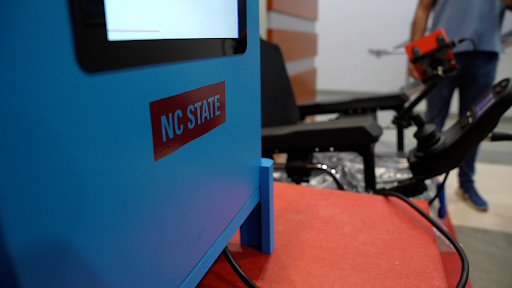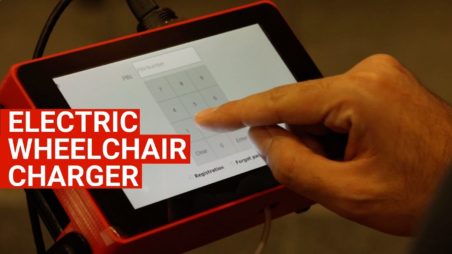
ECE Researchers Help Develop Public Charging Infrastructure for Wheelchairs
ECE researchers are helping to develop accessible public charging infrastructure for electric wheelchair users. Two years in the making, and the product is now ready for public use.
October 17, 2022 ![]() Isabella Mormando
Isabella Mormando
There are over 1.7 million electric wheelchair or scooter users in the world, and they all lack access to advanced public charging infrastructure for their devices. The Administration for Community Living (ACL) is sponsoring researchers at NC State to help solve this problem.
ACL is a division of the United States Department of Health and Human Services. The program was created to ensure that people of all ages and abilities can participate fully in their communities by living independently. ACL supports this mission through various programs and with investments in research, education, and innovation.
One of those investments was to develop an advanced charging network for wheelchair users. The research team includes NC State University, the UNC School of Medicine, and the Renaissance Computing Institute at UNC (RENCI). Zeljko Pantic and Tianfu Wu, both Associate Professors of Electrical and Computer Engineering, are leading the effort at NC State along with Srdjan Lukic, ECE Professor and Deputy Director of FREEDM Systems Center.
Two years in the making, their network and hardware are now ready for public use. The system includes an offboard charger, a user interface on the chair that reports battery status and charger locations, and a web portal that shows real time updates and performance information.
The universal charger allows input voltage from 100 to 240 Volts AC. The current and voltage are programmable, allowing the charger to work with a wide variety of batteries. The charger can be wall mounted or free standing. Wide band gap semiconductor technology at the heart of the converter uses Gallium Nitride transistors which provides a highly efficient and compact design.
The wheelchair interface links to a Data Acquisition and Sensing System (DASS) that captures environmental data such as temperature, positioning altitude, and more. All of this information can be displayed on the touchscreen where users can interact with the charger via Bluetooth and control the entire charging process – from start to finish.
RENCI built a web application that pushes charging information to the cloud for access. People can see their nearest charging location, which chargers are available or in use, and other helpful information. In a future iteration of the project, the team will incorporate artificial intelligence to communicate to the user the most feasible route and location to a charger and when charging is necessary based on current battery percentages. The team would also like to migrate this web application to mobile devices. This way, wheelchair users will be able to easily locate, navigate and plan their next charge from the palm of their hand.
To learn more about this project, check out the video on YouTube:




